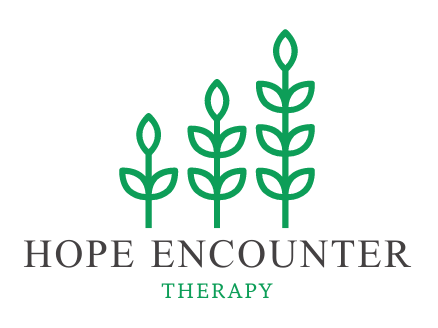Eye Movement Desensitization and Reprocessing (EMDR) is a therapeutic approach. One that was originally developed to help individuals process trauma. While it has gained considerable recognition for treating adults, a growing body of research and clinical experience suggests that EMDR can also be highly beneficial for children. In this blog post, we will explore why EMDR therapy is effective for children. As well as how it works and what makes it particularly suitable for young minds.

Understanding Childhood Trauma
Children are not immune to trauma. In fact, childhood trauma can be particularly devastating because the brain is still developing, making it more vulnerable to the long-term impacts of traumatic experiences. Traumas can range from acute incidents such as accidents, natural disasters, or sudden loss to chronic experiences like abuse, neglect, or living in a high-stress environment.
The way children process trauma is different from adults do. They might not have the language skills to articulate their feelings. Often expressing distress through behavior changes, physical complaints, or regression in developmental milestones. Traditional talk therapy can be challenging for children as it relies heavily on verbal expression and abstract thinking, which may not be fully developed in younger clients.
What Makes EMDR Suitable for Children?
EMDR’s effectiveness for children lies in its ability to bypass the verbal and cognitive limitations that can hinder traditional therapy. Rather than relying on extensive talking, EMDR uses bilateral stimulation (such as eye movements, tapping, or audio cues) to help the brain reprocess traumatic memories. This method is more accessible for children because it does not require them to constantly verbalize their experiences.
Additionally, EMDR is flexible and can be adapted to the developmental stage of the child. For instance, therapists may use stories, drawings, or play-based methods to facilitate memory processing, making the experience feel less intimidating and more engaging for young clients.
The Science Behind EMDR in Children
Trauma often disrupts the brain’s natural information processing. Thus causing memories to become fragmented and stuck. EMDR helps reintegrate these fragmented memories by stimulating both hemispheres of the brain, facilitating the natural healing process. For children, this means that distressing memories lose their emotional intensity, allowing the child to view the experience more objectively.
One significant advantage of EMDR for children is its ability to reduce symptoms relatively quickly compared to other therapeutic approaches. Since children are generally more adaptive and resilient, they often respond more rapidly to EMDR, experiencing relief from symptoms such as anxiety, nightmares, behavioral outbursts, and emotional dysregulation.
Case Example: Transforming Trauma in a Child
Eight-year-old Ben had witnessed a car accident involving his family. After the incident, he developed intense anxiety around cars and refused to ride in them, making daily life increasingly difficult. Traditional talk therapy had limited success, as Ben struggled to put his feelings into words.
When Ben began EMDR therapy, his therapist used bilateral stimulation along with storytelling techniques. Ben was encouraged to draw pictures related to his fears while engaging in rhythmic tapping. Over several sessions, his anxiety noticeably decreased. He became more willing to talk about his experience without becoming overwhelmed, and his fear of cars gradually diminished. EMDR helped him process the trauma in a way that felt safe and manageable.

Benefits of EMDR for Children
- Non-Verbal Processing: Since EMDR does not rely solely on talking, it is well-suited for children who might lack the vocabulary or emotional awareness to discuss their trauma.
- Flexibility and Adaptation: Therapists can tailor EMDR to fit the child’s developmental level, incorporating creative and playful methods.
- Rapid Symptom Reduction: Many children experience relief from symptoms faster than with traditional therapy, making it practical for families seeking quicker results.
- Minimal Retraumatization: Unlike therapies that require repeatedly discussing traumatic events, EMDR focuses on reprocessing without extensively revisiting the painful details.
- Long-Term Healing: By addressing the root of the trauma, EMDR helps children build healthier coping mechanisms and reduces the risk of trauma resurfacing later in life.
When Is EMDR Appropriate for Children?
EMDR can be effective for a wide range of issues in children, including:
- Post-Traumatic Stress Disorder (PTSD)
- Phobias and anxiety
- Depression linked to traumatic events
- Grief and loss
- Bullying and school-related stress
- Behavioral challenges related to past trauma
However, it is essential that EMDR is conducted by a therapist trained to work with children, as they will understand how to adapt the process for younger clients. Not all children are immediate candidates for EMDR, especially if they have difficulty focusing or engaging in structured activities. An initial assessment can help determine whether EMDR is suitable.
Conclusion
EMDR has proven to be a transformative tool for children dealing with trauma. Its non-invasive, adaptable approach helps young minds heal without the pressure of articulating complex emotions. By targeting how trauma is stored in the brain, EMDR fosters quicker, more profound recovery, giving children the chance to move forward without the weight of their past experiences. If your child is struggling with trauma-related symptoms, consulting a trained EMDR therapist could be the first step toward healing.
Would you like more insights into how EMDR can support your child’s mental health? Reach out to a specialist at Hope Encounter Therapy today for a free 15-minute video consultation.

Help Your Child Overcome Trauma With EMDR Therapy in Raleigh, NC
If your child is struggling with trauma, EMDR therapy can be the first step toward healing and recovery. At Hope Encounter Therapy, we offer a compassionate, supportive environment to help children cope with and overcome the lasting effects of trauma. Contact us today to schedule a consultation and give your child the opportunity to begin their healing journey with EMDR therapy in Raleigh, NC. Follow these three simple steps to get started:
- Contact us for a free consultation.
- Meet with one of our skilled EMDR therapists.
- Begin seeing your child heal!
Additional Services Offered at Hope Encounter Therapy
At Hope Encounter Therapy, we are committed to guiding individuals through their personal healing processes. While EMDR therapy plays a significant role in trauma recovery for children, we recognize that each healing journey is unique. That’s why we also offer Somatic Experiencing, Cognitive Processing Therapy (CPT), and Narrative Therapy, customizing our approach to meet your specific needs. Our individual therapy services are centered on trauma recovery, and our blog provides valuable insights, actionable strategies, and continuous mental health support.


